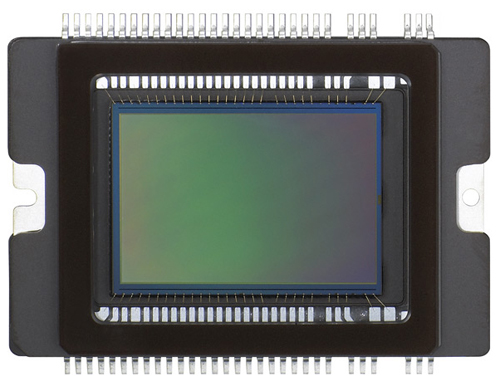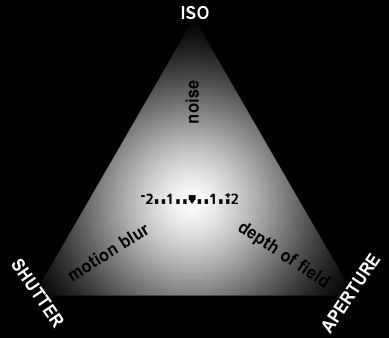
An image sensor is a device that converts an optical image to an electric signal. It is used mostly in digital cameras and other imaging devices. Early sensors were video camera tubes but a modern one is typically a charge-coupled device (CCD) or a complementary metal–oxide–semiconductor (CMOS) active pixel sensor. Today, most digital still cameras use either a CCD image sensor or a CMOS sensor. Both types of sensor accomplish the same task of capturing light and converting it into electrical signals. CCD vs CMOS. That is the question. Whether ’tis nobler to choose quality and cost or to choose features and energy efficiency. Should it be CCD (charge coupled device) or CMOS (complementary metal oxide semiconductor)when making your digital camera choice?
This was a question that I struggled with when I was first considering which kind of digital camera to buy.
These two types of image sensors came into being in the late 1960s and into the 1970s. CCD sensors were clearly the best choice early on because of their superior quality and so my first digital SLR camera was an Olympus E-10 with a 4.0 megapixel CCD sensor.
Because of continuous technological developments, there are many other sophisticated and technical differences in how the sensors are manufactured as well as how the digital information is processed and stored. My last three dSLR cameras, the Canon 10d, 20d and 5d have all had Complementary Metal Oxide Semiconductor sensors.
CCD Sensor
The mediums used to record the image a traditional camera is the photographic or light sensitive film. Film is exposed to light and is later processed in chemicals to render an image. A digital camera however, does not use photographic film to record an image nor is there a chemical processing of the image. The digital camera works by using a light sensor or chip which absorbs light particles converting them into electrical charges. The light sensor is divided up into many small arrays of receptor cells. The more light these arrays of cells exposed the more light is recorded. These cells alone (with exceptions to emerging technologies such as Foveon x3) cannot recognize the different colors of the spectrum so during exposure primary colored filters are used in front of the image sensor which are a charged-couple device or CCD The charge generated by the CCD is stored as analogue information until it s digitized from analogue to digital converter or ADC. Every receptor in the array is equivalent to one pixel and it is the pixels that make up an image.
CCD Sensor Advantage
– Higher Quality
– Higher Sensitivity
This kind of sensor would be good for professional photographers and imaging scientists where the absolute highest quality is needed.
CMOS Sensor
Not all digital cameras use CCD chips as image sensors. Some cameras use CMOS chips, or Complementary Metal Oxide Semiconductor. The CMOS based sensors are manufactured using the same process that is used to mass produce DRAM and microprocessors. CMOS sensors are cheaper and easier to manufacture than CCD chips, as they are smaller and more energy efficient than CCD’s. Generally speaking, digital cameras that use CMOS chips are usually lighter than their CCD counterparts. However CMOS chips do have their drawbacks as they are less light sensitive. Once upon a time digital cameras utilizing CMOS were regarded inferior in terms of image quality, today however many popular digital cameras and video cameras are increasing in popularity as CMOS technology improves. CMOS technology allows other circuitry to be incorporated into the same chips, making them useful to a manufacturer for use in other electronic applications.
CMOS Sensor Advantage
– Less Power Consumption
– Cheaper cost
This kind of sensor would make sense for camera phones, PDAs and other portable devices where power is at a premium and quality is not essential.
I can honestly tell you , that in the more than a decade of digital photography experience, I have never been able to tell the difference between a photo taken with one kind of sensor or the other. The most important thing in the quality of your digital photos is you. There are many other digital photo tips about choosing cameras and other related photography tips on this website. The gap between the two kind of sensors has narrowed dramatically. Remember it is not the slight differences in these two digital camera sensors that will make your photos better. Only the highest level of technical or scientific photographers may be able to discern or measure the differences. So what should you do when making your digital camera choice on what to get: CCD vs. CMOS? Decide if those minuscule differences are really important to you. If not, look at the digital camera reviews and think about what features really matter to you based on the type of digital photography you are doing. Fundamentally, for most photographers, the CCD vs. CMOS choice doesn’t really matter much anymore.
Photography Definitions and Digital Camera Terms. Curious about other camera terms or digital photography definitions?
Click : Digital Photography Glossary
Also Click: CCD vs CMOS Fact And Fiction
via
















